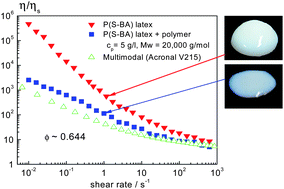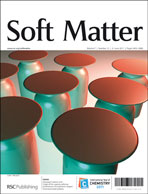An alternative route to highly concentrated, freely flowing colloidal dispersions
Abstract
Dense colloidal dispersions exhibit fluid states due to weak attractive interactions among particles even at particle volume fractions far above the colloidal glass transition. Here we demonstrate that this opens up a new route to manufacture highly concentrated, freely flowing dispersions. We have studied the rheological properties of two model dispersions in the dense, fluid state: PS-microgel particles suspended in an isorefractive organic


 Please wait while we load your content...
Please wait while we load your content...